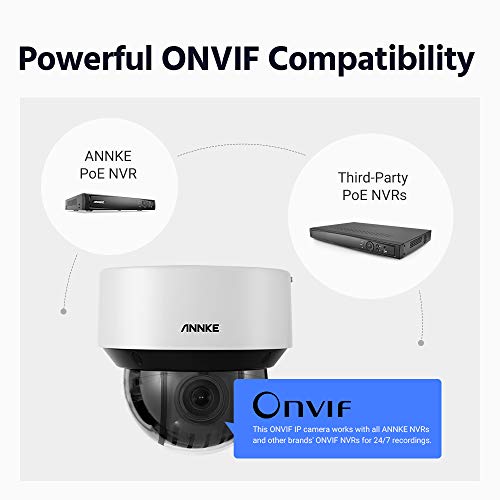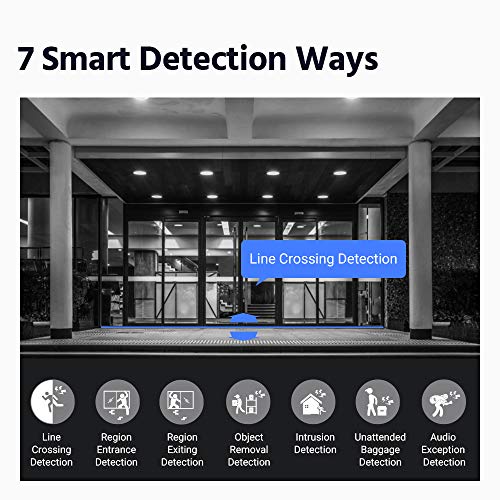What Is Facial ID Biometrics?
How Does Facial Recognition Work?
How Do Facial Recognition Cameras Work?
When Was The First Face ID By A Camera?
Who Uses Facial Biometrics Readers?
Facial Recognition Security Cameras
Where To Use Around The Home?
How Much Do Facial Recognition Cameras Cost?
Best Facial Recognition Cameras For Home Use
Outdoor Facial Recognition Cameras
IP Facial Recognition Cameras
Future Outlook For Recognition Security Cameras
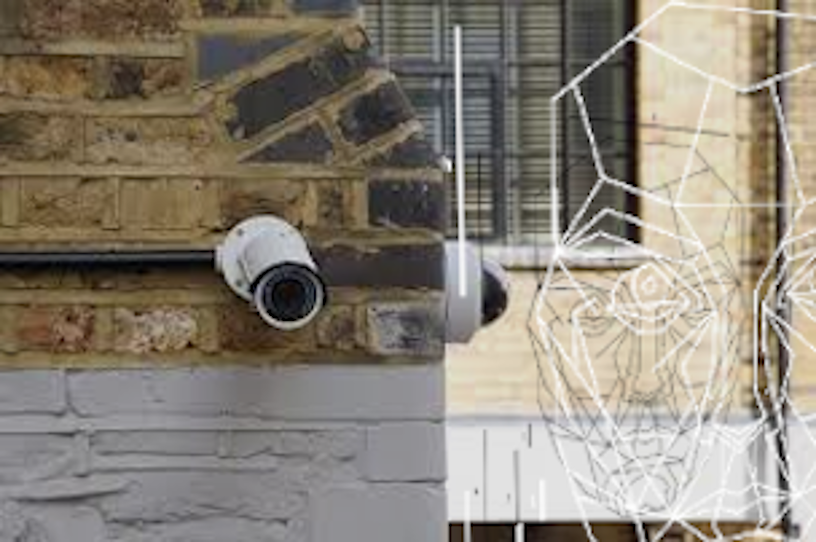
Facial ID Technology-
Biometrics are nothing new and you already know it. Handprints on cave walls, birthmarks, fingerprint ink ID, hair samples, DNA… So, it should be not surprise that yes we have arrived at the point in time when you are able to use this technology for home use, right on your front doorstep if you like, or anytime throughout daily life.

Chances are if you have a more modern PC or apple computer it has some version of facial recognition software installed to be used with the built-in camera. Microsoft, Apple, Google, and even Amazon Rekognition are already semi-popular platforms. Or you may have a fingerprint sensing button serving as your POWER button.
What are Facial ID Biometrics?
The action by which identifying, mapping, and organizing information of a individual is done by specific features or fiducial in this case specifically the face features. Facial identification IP cameras will locate the face of an individual through preprogrammed computer algorithms of basic face features (ie..nose, eyes, mouth), and place distinctive existing data and markers alongside the data within the video feed coming into the camera. It then analyzes the data. Algorithm processing software is called on to filter and produce matching results from the database of stored facial data.
At that point it’s up to the status of the person whether or not they can continue or are denied whatever result comes from being recognized by the camera. Although it could simply be a passive ID that is collected in a database for later inspection in the UI (User Interface) of the system.
The Hollywood movies always love a good visual aspect, and you may have in your mind the old doorways scene where the laser beam fans out and goes up and down over the face of the character in the movie and everyone prays the door opens. 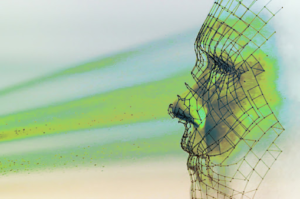 This is not how it works and there are so many mechanically wrong concepts to that scene it’s soap snowflakes. That’s just for show. But looks cool anyhow.
This is not how it works and there are so many mechanically wrong concepts to that scene it’s soap snowflakes. That’s just for show. But looks cool anyhow.
How Does Facial Recognition Work?
Facial ID cameras work through math calculations. Lots of calculations within the time to blink an eye. Hardware and software come together to create a tool for a job that seems almost unreal. Hardware consisting of optic lenses, PCB boards, silicon chips, wires, various plastics, metal mounts and bases make up the overall structural components. While computer code and what’s known as “algorithms” is operated and activated via the hardware components. The two roles are dependent on each other for the camera to work correctly.
🎥【Use in conjunction with Alexa two-way audio】 The built-in noise reduction microphone and speaker can communicate with your lover when you are out….
As mentioned previously, math is a key factor although various methods of Facial Recognition Technology, or the various algorithms will use different calculations to achieve the same end result. Much like traveling can be done by walking, riding a bike, driving, flying ect… There’s more than one way to compute a face and identify it.
What is an Algorithm?
It’s computer code. Next question….
No seriously it is grouped or related code. Kind of like a hat is to an outfit. Or a house is to a neighborhood. It is a self-working, self-contained, sometimes self-learning, object of instruction that does its function and works alongside other code of operation. We hear that “Algorithm” word and think wow, that must be advanced. But is just a term for a defined function set. Yes, they do get wildly advanced in their mathematical abilities. Their job is to produce a result output from what the input is declared. Picking what to eat at McDonalds is loosely an algorithm of deciding a meal. There is an input of the menu to your brain, the processing of hunger (what to get), and the output declaration to the teller what you would like.
How do security cameras use Facial Recognition?
Pertaining to recognition security cameras, the video signal is a digital representation of the light, shapes, colors all streaming into the video processor by means of buffering and signal conditioning through complementing input circuits. The video processor will manage the data for presentation to the other processor ICs and algorithms contained within the RAM or Firmware side of the software. Self-learning can be one aspect of the algorithm’s duty. It’s worth noting that the video is not streamed or “rolling” during the time of inspection. The software uses still images sampled at a high rate to calculate and analyze when actively working.
A locating process is started to center the location of the facial data retrieved and computed. Fiducials are marker points used as reference in alignment. Features such as eyes, nose point, cheeks, and chin can be incorporated to achieve alignment to begin the facial ID process.
Once located, the internal processor is instructed to gather the meta data from the surrounding features and arrange the data in organized items. This could include shape of chin, shape of eyes, shape of nose. A “faceprint” if you will, is created and the digital data associated with it is digested by the next part of the process. The database is not used by a person using the camera meaning the fields within the database would specifically be key info/computations for the algorithms of the recognition software.
Now this all depends on what algorithms are used and what purpose the device is built for. Some will use maps or specific points. Some will pull distance of points and compare and recompare.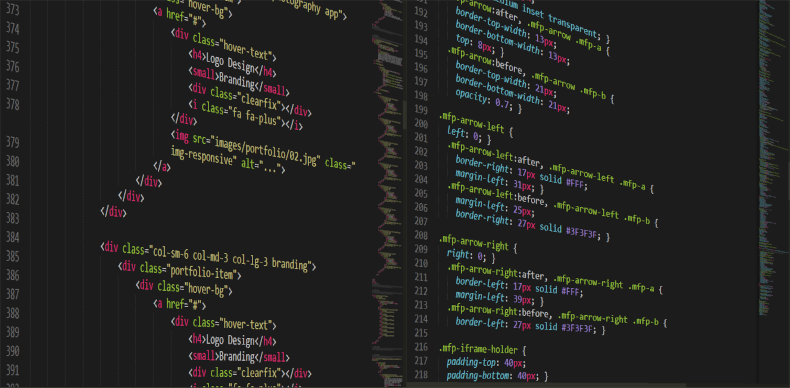
The algorithm for the cameras ID analytics is employed and results from this data is used for database query. The accompanying User Interface software will present the findings as determined by the manufacturer or through settings made by the user. Many UI’s will format the recognized ID’s or matches as columns of thumbnails. It will let you see each unique ID the camera was able to identify and log into the database.
When was the first face scan?
There was once a time when computers could only really do local things, meaning run programming contained on the storage drive. Until data could be written to a media (tape or diskette) computer could only take input from the actual user pressing buttons. Now that connectivity is at such a heightened pace, nearly all electronics devices and appliances are accessible from the average home computer.
Early 60’s Facial ID Experiments…
The first serious, roll-up-your-sleeves pioneers of facial recognition technology was TikToc, oh wait no, actually they were a mathematical and computer scientists, Woody Bledsoe, Helen Chan Wolf an Artificial Intelligence pioneer who helped make the worlds first autonomous robot, and Charles Bisson. In 1964 and 1965, Bledsoe, along with Wolf and Bisson began work using computers to recognize the human face.
At that time, it was a data entry era. Meaning the photo of a face would be hand measured with 20 some points of interest. Say the distance from eye to nose or the size of pupil. All the data was entered into a computer that had several data photos stored for reference. It was an unreliable process as the margin of error was from the human pulling numbers off a photo, to the face in the photo may be at a different angle, or lighting, or the persons expression would change the measurements. So these experiments proved how sophisticated a quality facial recognition system needed to be.
In 1966 Bledsoe completed more experiments at Stanford University. He with the help of others achieved a positive direction in research. They used 2000 photos and put the measurements into a database orientation. The machine consistently outperformed humans as it would reliably find matches to the photo under test but limitations where still present. It did prove computers were the only efficient way to do it. Once technology caught up to the limitations.
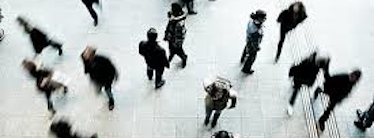
A very thorough page covering many developments through the years of Facial recognition technology can be found at the NEC site here.
Even today and all the advancements, still the concepts of lighting, angles, scale of view, and face expressions are hurdles to overcome. They are small bumps instead of large mountains, yet they still exist to throw false results in the mix from time to time.
List of Types of Facial Algorithms-
- Principal Component Analysis (PCA) – Uses the key components of a collection of data and sifts out the rest of unused data. Uses vectors of points within the algorithm.
- Linear Discriminant Analysis (LDA) – Lays data onto a flat surface for better accuracy. It reduces the hurdle of lighting and angle before analyzing.
- Elastic Bunch Graph Matching – Takes a grid type layout and graphs according to shape and distance of nodes.
- Fisherface – Derivative of Fisher’s Linear Discriminant (FLD) which
maximizes the ratio of between-class scatter(image activity) to that of
within-class scatter between lighting spaces and face expressions. More hurdle jumping for the algorithms. - Eigenface method – Uses similar space and scatter data as Fisherface, but lays it into a smaller defined space in hopes it will eliminate variants of light and angles.
- Hidden Markov Model – Takes an input and results an output while learning the model of the function as it develops the output. Says if the nose is here, the eyes must be here as a result.
- Multilinear Subspace Learning – Oh my, this one uses images and defines vectors for shapes and dimensions to eliminate errors with photo angles and face expressions. This is a 3D generator if you will.
- Neuronal Motivated Dynamic Link Matching – Graph-based system using wavelets. Oscillations that come and go within the image data are analyzed and can be used to fill gaps in data. Or for instance smooth out facial features from poor lighting or angles.
- Local Binary Pattern (LBP) – Takes an image data set and grids the data into binary 1 or 0 states. Cleaning up irregularities before ID calculations.
There are many more algorithms and methods out there, for example Local Polynomial Approximation (LPA) and Local Binary Patterns (LBP).
Who uses Facial Biometrics Readers?
Well, it freaks out San Francisco so much they won’t even use it. Illinois says you need consent to record biometrics. They are the only states that has law restrictions. In the rational world, where is it used?
Nearly every place foot traffic is encountered. Nearly every smartphone can do it now. Nearly every current laptop can do it now. Everyplace high security and awareness is needed. This includes schools, businesses, airports, stations, hospitals, you name it. All the way down to the phone in your hand.
A better question is when will everyone have it active and used constantly? Think of losing something in the age of biometric ID and everything is locked until you unlock it. Even if you lost it across town.
Facial Recognition Security Cameras
Where to use around the home?
When you allow people to have freedom of choice, you get the most amazing and creative responses. You will decide where you need such a technology. Maybe you have a neighborhood with lots of stray animals. You could locate recognition cameras in the place where pets come and go. 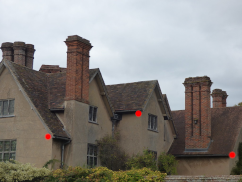
At your entry points or higher traffic points are great locations. Kids after school could allow friends to come over and maybe you get an alert if “that one bad influence” happens to be recognized by your security camera. The possibilities are endless but being practical about it always makes life easier.
How Much Do Facial Recognition Cameras Cost?
This question is like asking how much does a car cost? Average economical brands today will range from $30 to $2000 if the system is large enough. Higher-end manufacturers with heavy resources in development and computer skills will range above $2000 and beyond as the system scale grows.
Home use of facial ID means the overall dynamics of the system don’t have to be the highest technology on the planet. Many cameras under $300 will impress with there ability to find and even some times provide video clips as each ‘encounter’ is labeled. This gives the user a YouTube like feel to the presented ID findings.
Best Facial Recognition Cameras For Home Use
Outdoor Facial Recognition Cameras
Outdoor facial recognition security cameras with ID capabilities are sometimes not only used for a person’s face, but vehicles as well. Cars and trucks can have mechanometric(?) traits which can be used in parking lots and garages.
Blurams Security Camera Outdoor Pro 1080p
Description
Blurams Security Camera Outdoor Pro 1080p | 2-Way Audio, Starlight Night Vision, Facial Recognition, Siren Alarm, Weatherproof, Cloud/Local Storage | Works with Alexa & Google Assistant & IFTTT & Siri
User-Friendly Controls plus the Latest Features
Features
- Smart Detection and Facial Recognition – Differentiate human, pet, and other moving objects. Facial Recognition lets you know if your kid is back or alert you if there is a stranger. Get instant notifications whenever motion is detected by the plug-in outdoor camera.
- Siren and Flashing Alarm – 3D noise reduction tech for much clearer sound quality, listen and communicate smoothly with your guest when they are at the door. Siren and flashing alarm of this security camera outdoor pro can manually send off a warning to an unwanted guest as needed and protect your home from potential intruders.
- Smart Integration – Use your simple voice command to view blurams security cameras’ live stream on Amazon Alexa or Google Assistant device with a screen. Works with IFTTT lets you link just about any set of smart devices so they can work together, make your home more relaxing.
- Starlight Night Vision – SONY CMOS Sensor, high-power infrared LEDs and IR CUT filter, the wireless security camera provides starlight night vision even in low light conditions.
- Optional Cloud/Local Storage – Store your recorded footage on an SD card or Cloud, provide a continuous recording in the cloud to monitor your house 24/7, relies on AWS to protect your data, ensures all recorded video is secure. (one-month cloud trial with free-rolling 24/7 storage on the cloud).
High Quality Manufacturing of the A21C-CA + Low Cost
Reviews
Details
Available Color
Length 3.88in. Weight 1.10231131lbs.
Still want to know a little more? (A21C-CA)
What Makes The Best Outdoor Camera?
IP ratings signify a level of resistance to outside element such as water and dust. A higher rating means the device is more capable to keep out junk that would ultimately ruin a good PCB board or solder connections. Conformal coating is used on many outdoor located devices and it will lockout mother nature from the delicate electronics.
Facial recognition camera powered by the sun, means you only need 1 sunny day to power the camera for up to 7 days in the event of a power/internet outage…
IP Facial Recognition Cameras
IP cameras come in indoor or in/outdoor versions from nearly every manufacturer. Desk top models are mainly for sitting at a computer or viewing a doorway. While wall mount facial recognition security cameras are for larger spaces and more traffic.
Here is a major system much larger than an average home would ever need. It has a wide array of cameras and a large ability to process all those cameras making to like easily sailing a cabin cruiser boat with controls everywhere in reach.
Ultra High Definition 4K (3840×2160) FOUR TIMES the resolution of 1080P! 16 Channel H.265 4K NVR with (16) H.265 4K (8MP) @15FPS Weatherproof 3.6mm Wide Angle PoE IP Bullet Cameras…
Annke has made reliable cameras for years. Jet Li the CEO has had many years of experience with security camera technology and installation. Annke was started in 2014.
ANNKE CZ500 Ultra PTZ Dome Network PoE IP Security Camera
Description
ANNKE CZ500 Ultra PTZ Dome Network PoE IP Security Camera with 4.8-120 mm 25X Optical Zoom 360° Pan 90° Tilt 164 ft Night Vision AI Facial Recognition Auto Tracking ONVIF H.265+ Coding
User-Friendly Controls plus the Latest Features
Features
- 【360° Pan, 90° Tilt & 25X Optical Zoom】 The 25X optical zoom with auto focus & 16X digital zoom, enable you to zoom in small & faraway objects in ultra-clear details. The high-speed dome IP camera rotates horizontally & vertically at 360° & 90° (up to 100°/s). Configure max 300 preset positions to patrol the important areas.
- 【4MP Super HD & 164 ft Night Vision】 Capture everything in true 4MP Super HD (2560 X 1440 pixels) day or night with the leading Ultra HD CMOS sensor. The low-light visibility tech enables the IP camera to deliver colorful images in 0.005 lux darkness, and provide crystal night vision images even from 164 ft away.
- 【Top 7 All-Around Detection Ways】 Get the most accurate alerts with the 7 exceptional detection ways: line crossing, intrusion, region entrance/exiting, unattended baggage, object removal, audio exception and AI facial detection ways. You’ll be notified only when a human enters/exits the preset virtual line/area, or when an object is removed or left suddenly.
- 【Remote Access & Motion Alerts】 Track a moving object with the auto, manual & event tracking ways for not missing any vital motion event. Receive instant app pushes & email alerts with snapshots upon there are motion events. Access the camera remotely with your smartphone, tablet, computer.
- 【H.265+ Coding & ONVIF Compatibility】 Enjoy smooth stream and save storage space with the H.265+ coding. This ONVIF PoE IP camera works with ANNKE NVR and other brands’ ONVIF NVRs for 24/7 record. You can also insert an up to 256 GB TF card for saving motion-triggered videos.
- Digital zoom: 16.0 multiplier_x
High Quality Manufacturing of the ANNKE CZ500 Ultra + Low Cost
This device is well made in overall assembly and workmanship.
Featuring modern styling, and practical functions.
Backed by the industries leading suppliers. Your lifestyle will be enhanced.
Reviews
Details
Available Color
Length in. Weight lbs.
Still want to know a little more? (ANNKE CZ500 Ultra)
NVR Facial Recognition
The NVR can contain the software needed to identify and organize video clips from facial recognition.
HDView Facial Recognition 16 Channel 4K NVR
Description
HDView Facial Recognition 16 Channel 4K NVR, 16 PoE Ports, Smart Intelligent Analytics, 16 Channel Audio, Up to 8MP IP Camera, Smart Search, Object Detection, Exception, Tripwire, Intrusion
User-Friendly Controls plus the Latest Features
Features
- Work with HDView Brand IP Cameras, Plug and Play, Search B0145XJYYK and B07Q11WB5F in Amazon.com
- H.265/H.264 Intelligent NVR, 16 Channel NVR, 16 POE Ports, Support 8MP/5M/4M/3M/2M/1.3M IP Cameras, Real Time Recording, 4K HDMI Video Output
- Advanced Mobile Phone App, Intelligent Analytics: Object Detection, Exception, Tripwire, Intrusion
- No Hard Drive Installed, Support up to 4 Hard Drive Disk @ 10TB each
- Face Recognition Features: Dynamic Face Capture, Real time Recognition, Face Database, Face Groups, Face Counting, Face Searching, Simultaneous Face Capturing, E-Map Face Tracking, Face Access Control, Face Time Attendance, Face Check In, Remote/APP Face Recognition
- Digital zoom: 16.0 multiplier_x
High Quality Manufacturing of the HDView Facial Recognition + Low Cost
This device is well made in overall assembly and workmanship.
Featuring modern styling, and practical functions.
Backed by the industries leading suppliers. Your lifestyle will be enhanced.
Reviews
Details
Available Color
Length in. Weight lbs.
Still want to know a little more? (HDView Facial Recognition)
Web Cams With Facial Recognition
Many web cams are Facial Recognition Friendly. A light-weight bar sits atop the screen edge and offers Reliable positioning for facial scans. Hands free login to your computer.
Noble Sky Facial Recognition 1080P Camera
Description
Noble Sky Facial Recognition 1080P Camera Full HD1080P Webcam Windows Hello USB IR Camera
User-Friendly Controls plus the Latest Features
Features
- This product enables you easily login into Windows 10 without typing a password. It frees your hand and secures you system. 0.1 second High speed login into your PC by looking to the lens.
- 1080P Full HD video calling, streaming and recording provide you a better experience when you work or study from home. Supported all windows-based applications that employ camera. Such applications includes skype, zoom and so on.
- Plug and Easy Use, no software driver needed or other software required.
- Protect your privacy even better – A bright LED light will blink and remind you the camera is working. Infrared Cam with Depth Sensor will detect and prevent from masquerade by photos.
- Strong and Nice Material – The camera is made of aluminum alloy which is clean and stronger (Normally, most camera on the market are made of Plastic). Smaller Size and Nice Looking are extremely important.^^
High Quality Manufacturing of the Noble Sky Facial + Low Cost
This device is well made in overall assembly and workmanship.
Featuring modern styling, and practical functions.
Backed by the industries leading suppliers. Your lifestyle will be enhanced.
Reviews
Details
Available Color
Length 4.8031496014in. Weight 0.15211896078lbs.
Still want to know a little more? (Noble Sky Facial)
Future Outlook for Recognition Security Cameras
The path for facial recognition devices will ultimately be made up of better analyzation for lighting, angles, face expressions and the like. All through better algorithms. Computer engineering is a constantly developing world full of new people and ideas each year. Curious minds always love the undertanding gained by diving down to the smallest degree of a process. Once image issues with real world enviroments are smoothed out, facial recognition software technology for security cameras will never be 100% perfect. But it can still be stunningly accurate. Today masks and makeup and electrical issues will result in something being an issue. As for now the good old days devices not looking at you, and I mean examing you are over.
Personal phones seem to hold the most momentum at the moment, as many users carry them, buy them, and break them. Users face directly at them a high number of minutes each day. Maybe one day the group bowling balls at the alley will know who’s next to roll because of facial recognition?

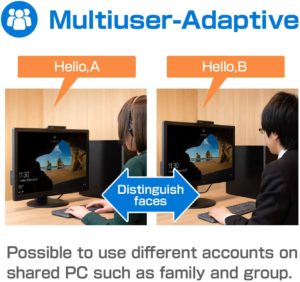

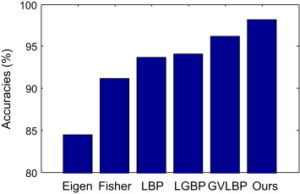 Great graph from Sciencediet.
Great graph from Sciencediet.








